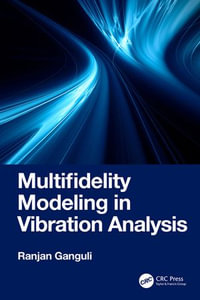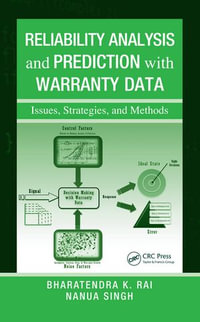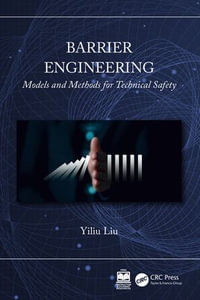
Practical Residual Stress Measurement Methods
By: Gary S. Schajer (Editor)
eBook | 22 April 2016 | Edition Number 1
At a Glance
328 Pages
eBook
$172.99
or 4 interest-free payments of $43.25 with
orInstant Digital Delivery to your Booktopia Reader App
Read on
An introductory and intermediate level handbook written in pragmatic style to explain residual stresses and to provide straightforward guidance about practical measurement methods.
Residual stresses play major roles in engineering structures, with highly beneficial effects when designed well, and catastrophic effects when ignored. With ever-increasing concern for product performance and reliability, there is an urgent need for a renewed assessment of traditional and modern measurement techniques. Success critically depends on being able to make the most practical and effective choice of measurement method for a given application.
Practical Residual Stress Measurement Methods provides the reader with the information needed to understand key residual stress concepts and to make informed technical decisions about optimal choice of measurement technique. Each chapter, written by invited specialists, follows a focused and pragmatic format, with subsections describing the measurement principle, residual stress evaluation, practical measurement procedures, example applications, references and further reading. The chapter authors represent both international academia and industry. Each of them brings to their writing substantial hands-on experience and expertise in their chosen field.
Fully illustrated throughout, the book provides a much-needed practical approach to residual stress measurements. The material presented is essential reading for industrial practitioners, academic researchers and interested students.
Key features:
• Presents an overview of the principal residual stress measurement methods, both destructive and non-destructive, with coverage of new techniques and modern enhancements of established techniques
• Includes stand-alone chapters, each with its own figures, tables and list of references, and written by an invited team of international specialists
Read on
List of Contributors xv
Preface xvii
1 Overview of Residual Stresses and Their Measurement 1
Gary S. Schajer and Clayton O. Ruud
1.1 Introduction 1
1.1.1 Character and Origin of Residual Stresses 1
1.1.2 Effects of Residual Stresses 3
1.1.3 Residual Stress Gradients 4
1.1.4 Deformation Effects of Residual Stresses 5
1.1.5 Challenges of Measuring Residual Stresses 6
1.1.6 Contribution of Modern Measurement Technologies 7
1.2 Relaxation Measurement Methods 7
1.2.1 Operating Principle 7
1.3 Diffraction Methods 13
1.3.1 Measurement Concept 13
1.3.2 X-ray Diffraction 14
1.3.3 Synchrotron X-ray 15
1.3.4 Neutron Diffraction 15
1.4 Other Methods 16
1.4.1 Magnetic 16
1.4.2 Ultrasonic 17
1.4.3 Thermoelastic 17
1.4.4 Photoelastic 18
1.4.5 Indentation 18
1.5 Performance and Limitations of Methods 18
1.5.1 General Considerations 18
1.5.2 Performance and Limitations of Methods 19
1.6 Strategies for Measurement Method Choice 19
1.6.1 Factors to be Considered 19
1.6.2 Characteristics of Methods 24
References 24
2 Hole Drilling and Ring Coring 29
Gary S. Schajer and Philip S. Whitehead
2.1 Introduction 29
2.1.1 Introduction and Context 29
2.1.2 History 30
2.1.3 Deep Hole Drilling 31
2.2 Data Acquisition Methods 31
2.2.1 Strain Gages 31
2.2.2 Optical Measurement Techniques 33
2.3 Specimen Preparation 35
2.3.1 Specimen Geometry and Strain Gage Selection 35
2.3.2 Surface Preparation 38
2.3.3 Strain Gage Installation 40
2.3.4 Strain Gage Wiring 40
2.3.5 Instrumentation and Data Acquisition 41
2.4 Hole Drilling Procedure 42
2.4.1 Drilling Cutter Selection 42
2.4.2 Drilling Machines 43
2.4.3 Orbital Drilling 44
2.4.4 Incremental Measurements 45
2.4.5 Post-drilling Examination of Hole and Cutter 46
2.5 Computation of Uniform Stresses 47
2.5.1 Mathematical Background 47
2.5.2 Data Averaging 49
2.5.3 Plasticity Effects 50
2.5.4 Ring Core Measurements 50
2.5.5 Optical Measurements 50
2.5.6 Orthotropic Materials 50
2.6 Computation of Profile Stresses 51
2.6.1 Mathematical Background 51
2.7 Example Applications 54
2.7.1 Shot-peened Alloy Steel Plate - Application of the Integral Method 54
2.7.2 Nickel Alloy Disc - Fine Increment Drilling 54
2.7.3 Titanium Test-pieces - Surface Processes 56
2.7.4 Coated Cylinder Bore - Adaptation of the Integral Method 57
2.8 Performance and Limitations of Methods 57
2.8.1 Practical Considerations 57
2.8.2 Common Uncertainty Sources 58
2.8.3 Typical Measurement Uncertainties 59
References 61
3 Deep Hole Drilling 65
David J. Smith
3.1 Introduction and Background 65
3.2 Basic Principles 68
3.2.1 Elastic Analysis 68
3.2.2 Effects of Plasticity 71
3.3 Experimental Technique 72
3.4 Validation of DHD Methods 75
3.4.1 Tensile Loading 75
3.4.2 Shrink Fitted Assembly 77
3.4.3 Prior Elastic-plastic Bending 78
3.4.4 Quenched Solid Cylinder 79
3.5 Case Studies 80
3.5.1 Welded Nuclear Components 80
3.5.2 Components for the Steel Rolling Industry 82
3.5.3 Fibre Composites 82
3.6 Summary and Future Developments 83
Acknowledgments 84
References 85
4 The Slitting Method 89
Michael R. Hill
4.1 Measurement Principle 89
4.2 Residual Stress Profile Calculation 90
4.3 Stress Intensity Factor Determination 96
4.4 Practical Measurement Procedures 96
4.5 Example Applications 99
4.6 Performance and Limitations of Method 101
4.7 Summary 106
References 106
5 The Contour Method 109
Michael B. Prime and Adrian T. DeWald
5.1 Introduction 109
5.1.1 Contour Method Overview 109
5.1.2 Bueckner's Principle 110
5.2 Measurement Principle 110
5.2.1 Ideal Theoretical Implementation 110
5.2.2 Practical Implementation 110
5.2.3 Assumptions and Approximations 112
5.3 Practical Measurement Procedures 114
5.3.1 Planning the Measurement 114
5.3.2 Fixturing 114
5.3.3 Cutting the Part 115
5.3.4 Measuring the Surfaces 116
5.4 Residual Stress Evaluation 117
5.4.1 Basic Data Processing 117
5.4.2 Additional Issues 120
5.5 Example Applications 121
5.5.1 Experimental Validation and Verification 121
5.5.2 Unique Measurements 127
5.6 Performance and Limitations of Methods 130
5.6.1 Near Surface (Edge) Uncertainties 130
5.6.2 Size Dependence 131
5.6.3 Systematic Errors 131
5.7 Further Reading On Advanced Contour Method Topics 133
5.7.1 Superposition For Additional Stresses 133
5.7.2 Cylindrical Parts 134
5.7.3 Miscellaneous 134
5.7.4 Patent 134
Acknowledgments 134
References 135
6 Applied and Residual Stress Determination Using X-ray Diffraction 139
Conal E. Murray and I. Cevdet Noyan
6.1 Introduction 139
6.2 Measurement of Lattice Strain 141
6.3 Analysis of Regular d?ψ vs. sin2ψ Data 143
6.3.1 D¨olle-Hauk Method 143
6.3.2 Winholtz-Cohen Least-squares Analysis 143
6.4 Calculation of Stresses 145
6.5 Effect of Sample Microstructure 146
6.6 X-ray Elastic Constants (XEC) 149
6.6.1 Constitutive Equation 150
6.6.2 Grain Interaction 151
6.7 Examples 153
6.7.1 Isotropic, Biaxial Stress 153
6.7.2 Triaxial Stress 154
6.7.3 Single-crystal Strain 156
6.8 Experimental Considerations 159
6.8.1 Instrumental Errors 159
6.8.2 Errors Due to Counting Statistics and Peak-fitting 159
6.8.3 Errors Due to Sampling Statistics 159
6.9 Summary 160
Acknowledgments 160
References 160
7 Synchrotron X-ray Diffraction 163
Philip Withers
7.1 Basic Concepts and Considerations 163
7.1.1 Introduction 163
7.1.2 Production of X-rays; Undulators, Wigglers, and Bending Magnets 166
7.1.3 The Historical Development of Synchrotron Sources 167
7.1.4 Penetrating Capability of Synchrotron X-rays 169
7.2 Practical Measurement Procedures and Considerations 169
7.2.1 Defining the Strain Measurement Volume and Measurement Spacing 170
7.2.2 From Diffraction Peak to Lattice Spacing 173
7.2.3 From Lattice Spacing to Elastic Strain 173
7.2.4 From Elastic Strain to Stress 178
7.2.5 The Precision of Diffraction Peak Measurement 179
7.2.6 Reliability, Systematic Errors and Standardization 180
7.3 Angle-dispersive Diffraction 184
7.3.1 Experimental Set-up, Detectors, and Data Analysis 184
7.3.2 Exemplar: Mapping Stresses Around Foreign Object Damage 186
7.3.3 Exemplar: Fast Strain Measurements 187
7.4 Energy-dispersive Diffraction 188
7.4.1 Experimental Set-up, Detectors, and Data Analysis 189
7.4.2 Exemplar: Crack Tip Strain Mapping at High Spatial Resolution 189
7.4.3 Exemplar: Mapping Stresses in Thin Coatings and Surface Layers 190
7.5 New Directions 191
7.6 Concluding Remarks 192
References 193
8 Neutron Diffraction 195
Thomas M. Holden
8.1 Introduction 195
8.1.1 Measurement Concept 195
8.1.2 Neutron Technique 196
8.1.3 Neutron Diffraction 196
8.1.4 3-Dimensional Stresses 198
8.1.5 Neutron Path Length 198
8.2 Formulation 199
8.2.1 Determination of the Elastic Strains from the Lattice Spacings 199
8.2.2 Relationship between the Measured Macroscopic Strain in a given Direction and the Elements of the Strain Tensor 199
8.2.3 Relationship between the Stress ?i,j and Strain ?i,j Tensors 200
8.3 Neutron Diffraction 201
8.3.1 Properties of the Neutron 201
8.3.2 The Strength of the Diffracted Intensity 202
8.3.3 Cross Sections for the Elements 203
8.3.4 Alloys 204
8.3.5 Differences with Respect to X-rays 205
8.3.6 Calculation of Transmission 205
8.4 Neutron Diffractometers 206
8.4.1 Elements of an Engineering Diffractometer 206
8.4.2 Monochromatic Beam Diffraction 206
8.4.3 Time-of-flight Diffractometers 209
8.5 Setting up an Experiment 210
8.5.1 Choosing the Beam-defining Slits or Radial Collimators 210
8.5.2 Calibration of the Wavelength and Effective Zero of the Angle Scale, 2?0 210
8.5.3 Calibration of a Time-of-flight Diffractometer 210
8.5.4 Positioning the Sample on the Table 211
8.5.5 Measuring Reference Samples 211
8.6 Analysis of Data 211
8.6.1 Monochromatic Beam Diffraction 211
8.6.2 Analysis of Time-of-flight Diffraction 212
8.6.3 Precision of the Measurements 213
8.7 Systematic Errors in Strain Measurements 213
8.7.1 Partly Filled Gage Volumes 213
8.7.2 Large Grain Effects 214
8.7.3 Incorrect Use of Slits 214
8.7.4 Intergranular Effects 215
8.8 Test Cases 215
8.8.1 Stresses in Indented Discs; Neutrons, Contour Method and Finite Element Modeling 215
8.8.2 Residual Stress in a Three-pass Bead-in-slot Weld 218
Acknowledgments 221
References 221
9 Magnetic Methods 225
David J. Buttle
9.1 Principles 225
9.1.1 Introduction 225
9.1.2 Ferromagnetism 226
9.1.3 Magnetostriction 226
9.1.4 Magnetostatic and Magneto-elastic Energy 227
9.1.5 The Hysteresis Loop 228
9.1.6 An Introduction to Magnetic Measurement Methods 228
9.2 Magnetic Barkhausen Noise (MBN) and Acoustic Barkhausen Emission (ABE) 229
9.2.1 Introduction 229
9.2.2 Measurement Depth and Spatial Resolution 230
9.2.3 Measurement 232
9.2.4 Measurement Probes and Positioning 233
9.2.5 Calibration 233
9.3 The MAPS Technique 235
9.3.1 Introduction 235
9.3.2 Measurement Depth and Spatial Resolution 237
9.3.3 MAPS Measurement 238
9.3.4 Measurement Probes and Positioning 239
9.3.5 Calibration 240
9.4 Access and Geometry 243
9.4.1 Space 243
9.4.2 Edges, Abutments and Small Samples 244
9.4.3 Weld Caps 244
9.4.4 Stranded Wires 244
9.5 Surface Condition and Coatings 244
9.6 Issues of Accuracy and Reliability 245
9.6.1 Magnetic and Stress History 245
9.6.2 Materials and Microstructure 246
9.6.3 Magnetic Field Variability 248
9.6.4 Probe Stand-off and Tilt 248
9.6.5 Temperature 249
9.6.6 Electric Currents 250
9.7 Examples of Measurement Accuracy 250
9.8 Example Measurement Approaches for MAPS 252
9.8.1 Pipes and Small Positive and Negative Radii Curvatures 252
9.8.2 Rapid Measurement from Vehicles 252
9.8.3 Dealing with 'Poor' Surfaces in the Field 253
9.9 Example Applications with ABE and MAPS 253
9.9.1 Residual Stress in ? Welded Plate 253
9.9.2 Residual Stress Evolution During Fatigue in Rails 253
9.9.3 Depth Profiling in Laser Peened Spring Steel 254
9.9.4 Profiling and Mapping in Ring and Plug Test Sample 254
9.9.5 Measuring Multi-stranded Structure for Wire Integrity 255
9.10 Summary and Conclusions 256
References 257
10 Ultrasonics 259
Don E. Bray
10.1 Principles of Ultrasonic Stress Measurement 259
10.2 History 264
10.3 Sources of Uncertainty in Travel-time Measurements 265
10.3.1 Surface Roughness 265
10.3.2 Couplant 265
10.3.3 Material Variations 265
10.3.4 Temperature 265
10.4 Instrumentation 266
10.5 Methods for Collecting Travel-time 266
10.5.1 Fixed Probes with Viscous Couplant 267
10.5.2 Fixed Probes with Immersion 267
10.5.3 Fixed Probes with Pressurization 270
10.5.4 Contact with Freely Rotating Probes 270
10.6 System Uncertainties in Stress Measurement 270
10.7 Typical Applications 271
10.7.1 Weld Stresses 271
10.7.2 Measure Stresses in Pressure Vessels and Other Structures 272
10.7.3 Stresses in Ductile Cast Iron 273
10.7.4 Evaluate Stress Induced by Peening 273
10.7.5 Measuring Stress Gradient 273
10.7.6 Detecting Reversible Hydrogen Attack 273
10.8 Challenges and Opportunities for Future Application 274
10.8.1 Personnel Qualifications 274
10.8.2 Establish Acoustoelastic Coefficients (L11) for Wider Range of Materials 274
10.8.3 Develop Automated Integrated Data Collecting and Analyzing System 274
10.8.4 Develop Calibration Standard 274
10.8.5 Opportunities for LCR Applications in Engineering Structures 274
References 275
11 Optical Methods 279
Drew V. Nelson
11.1 Holographic and Electronic Speckle Interferometric Methods 279
11.1.1 Holographic Interferometry and ESPI Overview 279
11.1.2 Hole Drilling 282
11.1.3 Deflection 285
11.1.4 Micro-ESPI and Holographic Interferometry 286
11.2 Moire Interferometry 286
11.2.1 Moire Interferometry Overview 286
11.2.2 Hole Drilling 287
11.2.3 Other Approaches 289
11.2.4 Micro-Moire 289
11.3 Digital Image Correlation 290
11.3.1 Digital Image Correlation Overview 290
11.3.2 Hole Drilling 291
11.3.3 Micro/Nano-DIC Slotting, Hole Drilling and Ring Coring 292
11.3.4 Deflection 293
11.4 Other Interferometric Approaches 294
11.4.1 Shearography 294
11.4.2 Interferometric Strain Rosette 294
11.5 Photoelasticity 294
11.6 Examples and Applications 295
11.7 Performance and Limitations 295
References 298
Further Reading 302
Index 303
ISBN: 9781118402825
ISBN-10: 1118402820
Published: 22nd April 2016
Format: ePUB
Language: English
Number of Pages: 328
Audience: Professional and Scholarly
Publisher: Wiley
Country of Publication: GB
Edition Number: 1























